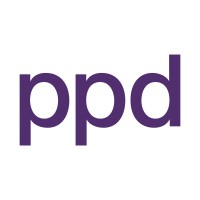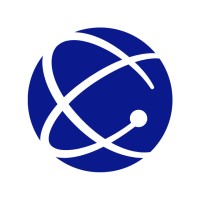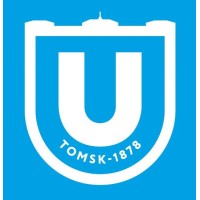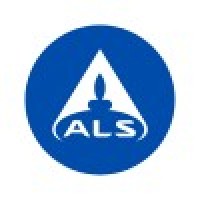
NWO (Dutch Research Council) Company Cyber Security Posture
nwo.nlThe Dutch Research Council (NWO) is one of the most important science-funding bodies in the Netherlands and ensures quality and innovation in science. Each year NWO invests more than 650 million euros in curiosity-driven research and research related to societal challenges. NWO selects and funds research proposals based on the advice of experts from science and society from the Netherlands and abroad. NWO encourages national and international collaboration, invests in large-scale research facilities, promotes knowledge utilisation, and manages research institutes. NWO funds more than 5600 research projects at universities and knowledge institutions.
N(RC Company Details
nwo
995 employees
57471.0
541
Research Services
nwo.nl
Scan still pending
NWO_2187425
In-progress
Between 900 and 1000
This score is AI-generated and less favored by cyber insurers, who prefer the TPRM score.
 N(RC Global Score
N(RC Global Score.png)

NWO (Dutch Research Council) Company Scoring based on AI Models
| Model Name | Date | Description | Current Score Difference | Score |
|---|---|---|---|---|
| AVERAGE-Industry | 03-12-2025 | This score represents the average cybersecurity rating of companies already scanned within the same industry. It provides a benchmark to compare an individual company's security posture against its industry peers. | N/A | Between 900 and 1000 |
NWO (Dutch Research Council) Company Cyber Security News & History
| Entity | Type | Severity | Impact | Seen | Url ID | Details | View |
|---|---|---|---|---|---|---|---|
| Dutch Scientific Research Organization (NWO) | Ransomware | 100 | 5/2025 | NWO348051325 | Link | ||
Rankiteo Explanation : Attack threatening the organization’s existenceDescription: The Dutch Scientific Research Organization (NWO) experienced a ransomware attack in February 2021 by the DoppelPaymer group. The attack caused material damage of €4.5 million, completely knocking out the agency's grant application and review process. It cut off communication with applicants, grantees, and universities, disabling email, apps, and phones. The organization was forced to cancel meetings and could not receive or pay bills until at least March 15. The attack was publicly disclosed on February 14, and sensitive files were released online when the ransom was not paid. | |||||||
| Dutch Scientific Research Organization (NWO) | Ransomware | 100 | 5 | 5/2025 | NWO918051325 | Link | |
Rankiteo Explanation : Attack threatening the organization's existenceDescription: The Dutch Scientific Research Organization (NWO) suffered a ransomware attack in February 2021, causing €4.5 million in damages. The attack, carried out by the DoppelPaymer group, disrupted the agency's grant application and review process, cutting off communication with applicants, grantees, and universities. The organization was unable to use email, apps, or phones and was forced to cancel meetings and unable to receive or pay bills until at least March 15. | |||||||
| NWO (Dutch Research Council) | Ransomware | 100 | 5 | 5/2025 | NWO352051325 | Link | |
Rankiteo Explanation : Attack threatening the organization's existenceDescription: The NWO suffered a ransomware attack in February 2021, which forced it to shut down its grant application system. The attackers, using DoppelPaymer ransomware, stole documents from the council's network and published them on their dark web leak site after the NWO refused to pay the ransom. The incident resulted in roughly €4.5 million in damages. | |||||||
| NWO (Dutch Research Council) | Ransomware | 100 | 5 | 5/2025 | NWO922051325 | Link | |
Rankiteo Explanation : Attack threatening the organization's existenceDescription: The NWO, a prominent research body in the Netherlands, faced a severe ransomware attack in February 2021. The DoppelPaymer ransomware forced the council to shut down its grant application system, leading to approximately €4.5 million in damages. The attackers exfiltrated sensitive documents and published them on the dark web after the NWO refused to pay the ransom. The incident disrupted the council's operations significantly. | |||||||
NWO (Dutch Research Council) Company Subsidiaries

The Dutch Research Council (NWO) is one of the most important science-funding bodies in the Netherlands and ensures quality and innovation in science. Each year NWO invests more than 650 million euros in curiosity-driven research and research related to societal challenges. NWO selects and funds research proposals based on the advice of experts from science and society from the Netherlands and abroad. NWO encourages national and international collaboration, invests in large-scale research facilities, promotes knowledge utilisation, and manages research institutes. NWO funds more than 5600 research projects at universities and knowledge institutions.
Access Data Using Our API

Get company history
.png)
N(RC Cyber Security News
Reducing software errors with transparent AI
The project is focused on reducing software errors using transparent AI. Through this funding programme, NWO will boost six new projects with a total of €10.5 ...
Cyberattack on Dutch Research Council (NWO) suspends research grants
Servers belonging to the Dutch Research Council (NWO) have been compromised, forcing the organization to make its network unavailable and suspend subsidy ...
NWO funds 5 Dutch projects €4.5m to tackle antibiotic resistance
The Dutch Research Council (NWO) has allocated €4.53m to five cutting-edge research projects to combat antibiotic resistance.
NWO Gravitation: nearly ten million euros for 'Challenges in Cyber Security'
'Challenges in Cyber Security' is one of seven research projects that received an NWO Gravitation grant this year, with the impressive sum of € ...
More than 160 million euros for world-class research
Seven consortia with top scientists from various Dutch universities will receive a total of 160.5 million euros. As part of the Gravitation ...
Suspected DoppelPaymer Ransomware Group Member Arrested
A 45-year-old individual was arrested in Moldova for his suspected involvement in DoppelPaymer ransomware attacks.
Gravitation grants for a 'brain atlas', challenges in Cyber Security, electro-energy and AI-help in designing blindness therapy
These are research projects 'Challenges in Cyber Security', the Nano-electrochemistry institute and the use of AI to design therapies for blindness.
Dutch Research Council (NWO) confirms ransomware attack, data leak
NWO is currently working on restoring the network, which indicates that systems have been encrypted, typical to most ransomware actors.
10.5 million for cybersecurity for digital resilience
With this grant, six projects are launched to increase the digital resilience of the Netherlands. This will make it harder for ...

N(RC Similar Companies

University of Cambridge
The University of Cambridge is one of the world's foremost research universities. The University is made up of 31 Colleges and over 150 departments, faculties, schools and other institutions. Its mission is 'to contribute to society through the pursuit of education, learning, and research at the hi

CEA
The CEA is the French Alternative Energies and Atomic Energy Commission ("Commissariat à l'énergie atomique et aux énergies alternatives"). It is a public body established in October 1945 by General de Gaulle. A leader in research, development and innovation, the CEA mission statement has two main

PPD
The PPD clinical research business of Thermo Fisher Scientific, the world leader in serving science, enables customers to accelerate innovation and drug development through patient-centered strategies and data analytics. Our services, which span multiple therapeutic areas, include early development,

Los Alamos National Laboratory
Los Alamos National Laboratory is one of the world’s most innovative multidisciplinary research institutions. We're engaged in strategic science on behalf of national security to ensure the safety and reliability of the U.S. nuclear stockpile. Our workforce specializes in a wide range of progressive

Tomsk State University
Founded in 1878, TSU is one of the first Russian higher education institutions that chose the path of innovative activity. Since opening its first innovation center for Siberian higher education institutions in 1993 and participation in the establishment of the very first Technology Park, the univer

ALS Investiga
Formada por um grupo de empresas especializadas na avaliação de produtos, que abrange as diversas etapas do seu desenvolvimento, desde a concepção até seu lançamento. Desde 1993, atuando no mercado nacional e internacional, atende clientes em diferentes países nas áreas de cosméticos, higiene pe

Frequently Asked Questions (FAQ) on Cybersecurity Incidents
N(RC CyberSecurity History Information
Total Incidents: According to Rankiteo, N(RC has faced 4 incidents in the past.
Incident Types: The types of cybersecurity incidents that have occurred include ['Ransomware'].
Total Financial Loss: The total financial loss from these incidents is estimated to be {total_financial_loss}.
Cybersecurity Posture: The company's overall cybersecurity posture is described as The Dutch Research Council (NWO) is one of the most important science-funding bodies in the Netherlands and ensures quality and innovation in science. Each year NWO invests more than 650 million euros in curiosity-driven research and research related to societal challenges. NWO selects and funds research proposals based on the advice of experts from science and society from the Netherlands and abroad. NWO encourages national and international collaboration, invests in large-scale research facilities, promotes knowledge utilisation, and manages research institutes. NWO funds more than 5600 research projects at universities and knowledge institutions..
Detection and Response: The company detects and responds to cybersecurity incidents through {description_of_detection_and_response_process}.
Incident Details
Incident 1: Ransomware Attack
Title: {Incident_Title}
Description: {Brief_description_of_the_incident}
Date Detected: {Detection_Date}
Date Publicly Disclosed: {Disclosure_Date}
Date Resolved: {Resolution_Date}
Type: {Type_of_Attack}
Attack Vector: {Attack_Vector}
Vulnerability Exploited: {Vulnerability}
Threat Actor: {Threat_Actor}
Motivation: {Motivation}
Incident 2: Data Breach
Title: {Incident_Title}
Description: {Brief_description_of_the_incident}
Date Detected: {Detection_Date}
Date Publicly Disclosed: {Disclosure_Date}
Date Resolved: {Resolution_Date}
Type: {Type_of_Attack}
Attack Vector: {Attack_Vector}
Vulnerability Exploited: {Vulnerability}
Threat Actor: {Threat_Actor}
Motivation: {Motivation}
Common Attack Types: The most common types of attacks the company has faced are ['Ransomware'].
Identification of Attack Vectors: The company identifies the attack vectors used in incidents through {description_of_identification_process}.
Impact of the Incidents
Incident 1: Ransomware Attack
Financial Loss: {Financial_Loss}
Data Compromised: {Data_Compromised}
Systems Affected: {Systems_Affected}
Downtime: {Downtime}
Operational Impact: {Operational_Impact}
Conversion Rate Impact: {Conversion_Rate_Impact}
Revenue Loss: {Revenue_Loss}
Customer Complaints: {Customer_Complaints}
Brand Reputation Impact: {Brand_Reputation_Impact}
Legal Liabilities: {Legal_Liabilities}
Identity Theft Risk: {Identity_Theft_Risk}
Payment Information Risk: {Payment_Information_Risk}
Incident 2: Data Breach
Financial Loss: {Financial_Loss}
Data Compromised: {Data_Compromised}
Systems Affected: {Systems_Affected}
Downtime: {Downtime}
Operational Impact: {Operational_Impact}
Conversion Rate Impact: {Conversion_Rate_Impact}
Revenue Loss: {Revenue_Loss}
Customer Complaints: {Customer_Complaints}
Brand Reputation Impact: {Brand_Reputation_Impact}
Legal Liabilities: {Legal_Liabilities}
Identity Theft Risk: {Identity_Theft_Risk}
Payment Information Risk: {Payment_Information_Risk}
Average Financial Loss: The average financial loss per incident is {average_financial_loss}.
Commonly Compromised Data Types: The types of data most commonly compromised in incidents are {list_of_commonly_compromised_data_types}.
Incident 1: Ransomware Attack
Entity Name: {Entity_Name}
Entity Type: {Entity_Type}
Industry: {Industry}
Location: {Location}
Size: {Size}
Customers Affected: {Customers_Affected}
Incident 2: Data Breach
Entity Name: {Entity_Name}
Entity Type: {Entity_Type}
Industry: {Industry}
Location: {Location}
Size: {Size}
Customers Affected: {Customers_Affected}
Response to the Incidents
Incident 1: Ransomware Attack
Incident Response Plan Activated: {Yes/No}
Third Party Assistance: {Yes/No}
Law Enforcement Notified: {Yes/No}
Containment Measures: {Containment_Measures}
Remediation Measures: {Remediation_Measures}
Recovery Measures: {Recovery_Measures}
Communication Strategy: {Communication_Strategy}
Adaptive Behavioral WAF: {Adaptive_Behavioral_WAF}
On-Demand Scrubbing Services: {On_Demand_Scrubbing_Services}
Network Segmentation: {Network_Segmentation}
Enhanced Monitoring: {Enhanced_Monitoring}
Incident 2: Data Breach
Incident Response Plan Activated: {Yes/No}
Third Party Assistance: {Yes/No}
Law Enforcement Notified: {Yes/No}
Containment Measures: {Containment_Measures}
Remediation Measures: {Remediation_Measures}
Recovery Measures: {Recovery_Measures}
Communication Strategy: {Communication_Strategy}
Adaptive Behavioral WAF: {Adaptive_Behavioral_WAF}
On-Demand Scrubbing Services: {On_Demand_Scrubbing_Services}
Network Segmentation: {Network_Segmentation}
Enhanced Monitoring: {Enhanced_Monitoring}
Incident Response Plan: The company's incident response plan is described as {description_of_incident_response_plan}.
Third-Party Assistance: The company involves third-party assistance in incident response through {description_of_third_party_involvement}.
Data Breach Information
Incident 2: Data Breach
Type of Data Compromised: {Type_of_Data}
Number of Records Exposed: {Number_of_Records}
Sensitivity of Data: {Sensitivity_of_Data}
Data Exfiltration: {Yes/No}
Data Encryption: {Yes/No}
File Types Exposed: {File_Types}
Personally Identifiable Information: {Yes/No}
Prevention of Data Exfiltration: The company takes the following measures to prevent data exfiltration: {description_of_prevention_measures}.
Handling of PII Incidents: The company handles incidents involving personally identifiable information (PII) through {description_of_handling_process}.
Ransomware Information
Incident 1: Ransomware Attack
Ransom Demanded: {Ransom_Amount}
Ransom Paid: {Ransom_Paid}
Ransomware Strain: {Ransomware_Strain}
Data Encryption: {Yes/No}
Data Exfiltration: {Yes/No}
Ransom Payment Policy: The company's policy on paying ransoms in ransomware incidents is described as {description_of_ransom_payment_policy}.
Data Recovery from Ransomware: The company recovers data encrypted by ransomware through {description_of_data_recovery_process}.
Regulatory Compliance
Incident 1: Ransomware Attack
Regulations Violated: {Regulations_Violated}
Fines Imposed: {Fines_Imposed}
Legal Actions: {Legal_Actions}
Regulatory Notifications: {Regulatory_Notifications}
Incident 2: Data Breach
Regulations Violated: {Regulations_Violated}
Fines Imposed: {Fines_Imposed}
Legal Actions: {Legal_Actions}
Regulatory Notifications: {Regulatory_Notifications}
Regulatory Frameworks: The company complies with the following regulatory frameworks regarding cybersecurity: {list_of_regulatory_frameworks}.
Ensuring Regulatory Compliance: The company ensures compliance with regulatory requirements through {description_of_compliance_measures}.
Lessons Learned and Recommendations
Incident 1: Ransomware Attack
Lessons Learned: {Lessons_Learned}
Incident 2: Data Breach
Lessons Learned: {Lessons_Learned}
Incident 1: Ransomware Attack
Recommendations: {Recommendations}
Incident 2: Data Breach
Recommendations: {Recommendations}
Key Lessons Learned: The key lessons learned from past incidents are {list_of_key_lessons_learned}.
Implemented Recommendations: The company has implemented the following recommendations to improve cybersecurity: {list_of_implemented_recommendations}.
References
Additional Resources: Stakeholders can find additional resources on cybersecurity best practices at {list_of_additional_resources}.
Investigation Status
Incident 1: Ransomware Attack
Investigation Status: {Investigation_Status}
Incident 2: Data Breach
Investigation Status: {Investigation_Status}
Communication of Investigation Status: The company communicates the status of incident investigations to stakeholders through {description_of_communication_process}.
Stakeholder and Customer Advisories
Incident 1: Ransomware Attack
Stakeholder Advisories: {Stakeholder_Advisories}
Customer Advisories: {Customer_Advisories}
Incident 2: Data Breach
Stakeholder Advisories: {Stakeholder_Advisories}
Customer Advisories: {Customer_Advisories}
Advisories Provided: The company provides the following advisories to stakeholders and customers following an incident: {description_of_advisories_provided}.
Initial Access Broker
Incident 1: Ransomware Attack
Entry Point: {Entry_Point}
Reconnaissance Period: {Reconnaissance_Period}
Backdoors Established: {Backdoors_Established}
High Value Targets: {High_Value_Targets}
Data Sold on Dark Web: {Yes/No}
Incident 2: Data Breach
Entry Point: {Entry_Point}
Reconnaissance Period: {Reconnaissance_Period}
Backdoors Established: {Backdoors_Established}
High Value Targets: {High_Value_Targets}
Data Sold on Dark Web: {Yes/No}
Monitoring and Mitigation of Initial Access Brokers: The company monitors and mitigates the activities of initial access brokers through {description_of_monitoring_and_mitigation_measures}.
Post-Incident Analysis
Incident 1: Ransomware Attack
Root Causes: {Root_Causes}
Corrective Actions: {Corrective_Actions}
Incident 2: Data Breach
Root Causes: {Root_Causes}
Corrective Actions: {Corrective_Actions}
Post-Incident Analysis Process: The company's process for conducting post-incident analysis is described as {description_of_post_incident_analysis_process}.
Corrective Actions Taken: The company has taken the following corrective actions based on post-incident analysis: {list_of_corrective_actions_taken}.
Additional Questions
General Information
Ransom Payment History: The company has {paid/not_paid} ransoms in the past.
Last Ransom Demanded: The amount of the last ransom demanded was {last_ransom_amount}.
Last Attacking Group: The attacking group in the last incident was {last_attacking_group}.
Incident Details
Most Recent Incident Detected: The most recent incident detected was on {most_recent_incident_detected_date}.
Most Recent Incident Publicly Disclosed: The most recent incident publicly disclosed was on {most_recent_incident_publicly_disclosed_date}.
Most Recent Incident Resolved: The most recent incident resolved was on {most_recent_incident_resolved_date}.
Impact of the Incidents
Highest Financial Loss: The highest financial loss from an incident was {highest_financial_loss}.
Most Significant Data Compromised: The most significant data compromised in an incident was {most_significant_data_compromised}.
Most Significant System Affected: The most significant system affected in an incident was {most_significant_system_affected}.
Response to the Incidents
Third-Party Assistance in Most Recent Incident: The third-party assistance involved in the most recent incident was {third_party_assistance_in_most_recent_incident}.
Containment Measures in Most Recent Incident: The containment measures taken in the most recent incident were {containment_measures_in_most_recent_incident}.
Data Breach Information
Most Sensitive Data Compromised: The most sensitive data compromised in a breach was {most_sensitive_data_compromised}.
Number of Records Exposed: The number of records exposed in the most significant breach was {number_of_records_exposed}.
Ransomware Information
Highest Ransom Demanded: The highest ransom demanded in a ransomware incident was {highest_ransom_demanded}.
Highest Ransom Paid: The highest ransom paid in a ransomware incident was {highest_ransom_paid}.
Regulatory Compliance
Highest Fine Imposed: The highest fine imposed for a regulatory violation was {highest_fine_imposed}.
Most Significant Legal Action: The most significant legal action taken for a regulatory violation was {most_significant_legal_action}.
Lessons Learned and Recommendations
Most Significant Lesson Learned: The most significant lesson learned from past incidents was {most_significant_lesson_learned}.
Most Significant Recommendation Implemented: The most significant recommendation implemented to improve cybersecurity was {most_significant_recommendation_implemented}.
References
Most Recent Source: The most recent source of information about an incident is {most_recent_source}.
Most Recent URL for Additional Resources: The most recent URL for additional resources on cybersecurity best practices is {most_recent_url}.
Investigation Status
Current Status of Most Recent Investigation: The current status of the most recent investigation is {current_status_of_most_recent_investigation}.
Stakeholder and Customer Advisories
Most Recent Stakeholder Advisory: The most recent stakeholder advisory issued was {most_recent_stakeholder_advisory}.
Most Recent Customer Advisory: The most recent customer advisory issued was {most_recent_customer_advisory}.
Initial Access Broker
Most Recent Entry Point: The most recent entry point used by an initial access broker was {most_recent_entry_point}.
Most Recent Reconnaissance Period: The most recent reconnaissance period for an incident was {most_recent_reconnaissance_period}.
Post-Incident Analysis
Most Significant Root Cause: The most significant root cause identified in post-incident analysis was {most_significant_root_cause}.
Most Significant Corrective Action: The most significant corrective action taken based on post-incident analysis was {most_significant_corrective_action}.
What Do We Measure?
















Every week, Rankiteo analyzes billions of signals to give organizations a sharper, faster view of emerging risks. With deeper, more actionable intelligence at their fingertips, security teams can outpace threat actors, respond instantly to Zero-Day attacks, and dramatically shrink their risk exposure window.
These are some of the factors we use to calculate the overall score:
Identify exposed access points, detect misconfigured SSL certificates, and uncover vulnerabilities across the network infrastructure.
Gain visibility into the software components used within an organization to detect vulnerabilities, manage risk, and ensure supply chain security.
Monitor and manage all IT assets and their configurations to ensure accurate, real-time visibility across the company's technology environment.
Leverage real-time insights on active threats, malware campaigns, and emerging vulnerabilities to proactively defend against evolving cyberattacks.




